It can be tough to choose the right caliber rifle you want. There are simply so many factors to consider and the casual shooter doesn’t necessarily hang out in gun forums or talk shop with fellow gun enthusiasts on the reg. Well, as an avid rifle enthusiast, I can give you a heads up on the pros and cons of each caliber. It’s easier than you might have imagined learning. Just follow our complete rifle caliber guide.
I will break down exactly how to know what you are getting with each caliber and what you want out of rifle calibers. Here we’ll cover rifle price points and recoil of a range of popular rifle calibers.
Table Of Contents
What is a Rifle Caliber?
Rifle caliber means the size of the bullet’s diameter which can be measured in either inch or metric units (mm or millimeter). Some people might wonder why we don’t just call it “bullet size,” but there’s a good reason for that. Technically speaking, a bullet is only the metal projectile whereas the entirety of the round you fire is called a “cartridge.” This includes the casing, the powder and the primer.
For a more in-depth guide of ammo and bullets, check out our bullets guide.
Rifle Cartridge vs Bullet
Rifles and rifle cartridges can be fired at ranges that handguns were not designed to. This means that you can faraway targets with unsurpassed accuracy. The rifle is but a part of the equation here. The cartridge comprises the other half of that equation and is key to the rifle shooting process.
When it comes to cartridges, the shooter has a wide range of options to choose from. Are you taking pot shots at squirrels in your backyard? For something like this, I usually prefer a smaller caliber as they are typically more accurate to this end. Are you going toe to toe with an extraterrestrial invasion? Probably you’ll want something a bit larger.
Let’s take a look at the definition and units of some of the factors that we’ll be considering when exploring the different caliber sizes.
Elements of Rifle Calibers
- Velocity: The precise speed of the bullet in feet/sec.
- Energy: The approximate power of each round.
- Bullet Weight: These will be measured in grains with 7.000 comprising a pound (a minuscule unit).
- Price point: the price of a single round. If you’re interested in where to buy ammo online, check the buy ammo online guide.
With those factors in mind, here are the most common rifle calibers and what makes them unique.
Types of Rifle Calibers
.22LR Caliber
The .22 LR is small round has a low recoil output for handguns and rifles alike. The twenty-two long rifle has a rimfire cartridge as opposed to centerfire since the firing pin hits the rim of the case rather than the center.
Long considered to be the ideal cartridge for recreational shooting, firearms training and small game hunting, the .22 cartridge is often sold in bulk or “bricks” (cartons of 10 boxes, each of which contains 50 rounds).
What is the Most Popular Rifle Caliber?
The .22 LR is by far the most popular rifle caliber around. The .22 long rifle is renowned for its high velocity and compact size. I always recommend this one to beginners because it’s easy to handle and packs a punch without punching you in the shoulder the way many other guns with heavy recoil tend to.
.22LR loads come in a variety of variants from subsonic (“target” rounds) to high velocity (1,200-1,310 ft) to hyper-velocity or “ultra-velocity” (over 1,400 ft).
What are .22 Subsonic Rounds?
. 22 Subsonic rounds are sometimes fitted with extra-heavy bullets (46-61 grain) to facilitate better terminal ballistics of the smaller and slower projectile. A common example of a subsonic round is the “Aquila .22 LR SSS “Sniper SubSonic” while a popular hyper-velocity round is the CCI Velocitor. The former is a 60 grain round while the latter is a 40 grain.
Although it is generally reserved for firing at small varmints and for target shooting, the .22 rifle can still be deadly when trained on human targets. The small caliber rounds have a tendency of bouncing around inside a person’s body, tearing organs and ligaments into ribbons.
.22 Caliber Specs
- Velocity: 1,200-1,600 ft/s
- Energy: 140-160 J (Joules)
- Price Point: 7 cents per round
- Bullet Weight: 30-40 gr
.30 CARBINE Caliber
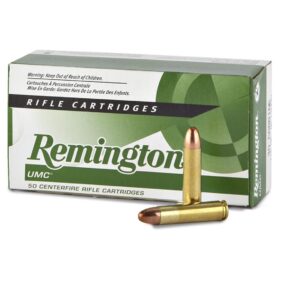
The .30 carbine was one of the very first PDWs (personal defense weapons) to be introduced to market and found favor among those in combat because it doesn’t get in the way of other tasks or duties that need to be carried out such as serving as an ammo boy (or ammunition bearer) or manning a post in battle.
The M1 Carbine weighs in at just over five pounds with a 36-inch length, making it handy and lightweight. It also had non-corrosive primers at a time when military ammo was usually corrosive. Today, the .30 Carbine is an economical plinker that makes hand-loading simple and can be used with fast-burning propellants.
Consistently accurate, the .30 Carbine can bench-rested with Winchester 110 grain FMJ bullets.
.30 CARBINE Caliber Specs
- Velocity: 2,000 ft/s
- Energy: 1,300 J (Joules)
- Price Point: 40 cents per round
- Bullet Weight: 110 gr
.300 BLK
The “three hundred Blackout” is a recent addition to the world of rifles, having been brought to market in 2011. Aimed at introducing the larger .30 caliber round to the AR platform, the .300 BLK provides excellent suppression capacity to modern magazines.
The recoil is nearly identical to that of the standard soft-shooting 5.56x45mm of an AR-15. It has grown in popularity thanks to its versatility and pop.
The 300 Blackout can perform in a number of different conditions and can use adjustable gas blocks for optimal versatility. Due to its subsonic ammo over-penetrating and under-expanding, it is often considered primarily a shooting range firearm.
300 Blackout Caliber Specs
- Velocity: 2,200 ft/s
- Energy: 1,360 J (Joules)
- Price Point: 70 cents per round
- Bullet Weight: 125 gr
7.62X39MM
A Russian round, the 7.62x39mm cartridge is designed to be used in SKS rifles and AK-47s. Since their importation, these rounds have steadily grown in popularity among owners of bolt-action rifles and semi-automatic such as the Ruger Mini-30.
A rimless bottlenecked intermediate cartridge, the 7.62x39mm is generally known to deliver medium range performance. As with the .22LR, it can be purchased in bulk from several online dealers.
The round’s larger size makes it a good option for hunting medium sized game like deer and can be great for self-defense purposes. They have a mild recoil and moderate range, but they also possess strong knockdown power.
7.62X39MM Caliber Specs
- Velocity: 2,400 ft/s
- Energy: 2,180 J
- Price Point: 20 cents per round
- Bullet Weight: 123 gr
5.56X45MM OR .223
This one comes in military grade, what we call the “NATO round,” which is standard to the M-16, but a civilian “two-two-three” has also been made readily available. A very accurate soft-shooting cartridge, the .223 is larger than the aforementioned .22LR.
Some states have prohibited hunters from using the two-two-three caliber when large game hunting because they consider it to be inhumane. As such, it is mostly used on home turf to fire at prairie dogs, gophers and other garden-dwelling pests.
While it isn’t a popular option for game, it does have long range accuracy that makes it a safe option for those who may come in contact with coyotes and other feral predators.
5.56X45MM Caliber Specs
- Velocity: 3,100 ft/s
- Energy: 1,770 J
- Price Point: 30 cents per round
- Bullet Weight: 55-62 gr
7.62 OR .308
The .308 is the civilian version of the 7.62, a weapon used by the US military. It is larger than the previously mentioned NATO round. Unlike the 5.56 which is a hotter round than its civilian counterpart, the .308 is typically hotter.
There are some drawbacks to this one including its fierce recoil and higher price, but its extended range and knockdown power more than make up for that. It’s also the preferred caliber for snipers all over the globe.
.308 Caliber Specs
- Velocity: 2,600-2,700 ft/s
- Energy: 3,300-3,500 J
- Price Point: 75 cents per round
- Bullet Weight: 147-175 gr
7.62X54MMR
A Russian cartridge that remains in active military use, the 7.62R (R for “Rimmed” as in rimmed rifle cartridge) is a hard-hitting large caliber option that is a mainstay for sniper rifles.
Although it has the stigma of causing harsh recoil, the 7.62 is nevertheless a notorious cartridge thanks to its intense stopping power, ferocious muzzle blast and affordable price. It is also readily available in bulk with some dealers offering them in 500 round boxes or pre-loaded in magazines.
7.62R Caliber Specs
- Velocity: 2,500-2,800 ft/s
- Energy: 3,600 J
- Price Point: 60 cents per round
- Bullet Weight: 150-181 gr
.30-06
This one replaced the .30-03 round among the US military back in 1906 which is why it got its name (06 as in 1906). Today, it is a popular bolt-action hunting round that can take down an animal of any size courtesy of its massive knockdown power and extended range. Like the 7.62, it’s got an intense recoil, but that’s just the price you pay for dead on accuracy.
.30-06 Caliber Specs
- Velocity: 2,500-2,900 ft/s
- Energy: 2,800-3,000 J
- Price Point: $1.50 per round
- Bullet Weight: 150-200 gr
.50 BMG
When it comes to a rifle caliber guide, no list would be complete without the big baller that is the fifty caliber BMG (Browning Machine Gun). Its giant size, insanely long range and incredible knockdown ability makes other calibers look like toys by comparison.
This one is good for everything from sniper rifles to semi-automatic machine guns. You’ll notice that this one is much more expensive than any other round on this list, but you get what you pay for and, at least in this case, quantity equals quality.
.50 Caliber Specs
- Velocity: 2,800-3,000 ft/s
- Energy: 18,000
- Price Point: $3.00 per round
- Bullet Weight: 647-800 gr
Rifle Caliber Guide Wrap Up
There you go! That’s my guide to common rifle calibers. If you think of any I may have left out, drop me a line and let me know. In the meantime, fire away and have some fun with all of these great cartridges!
If you want to choose a hunting rifle for yourself, check out our hunting rifles for beginners guide and if you already own a rifle wish to add some quality optics to it, have a look at best rifle scope for money guide.
Recommended Reading
10 Best Calibers for Deer Hunting
Handgun Caliber Showdown Round 1: 9MM VS .357 SIG
Caliber Comparison: 300 WIN MAG VS 308 WIN
6 Best Scout Rifles For Pinpoint Hunting Accuracy
9 Best Hunting Rifles for Deer and Other Wild Game
5 Best Rimfire Rifles For Beginners (Most Accurate & Best Price)
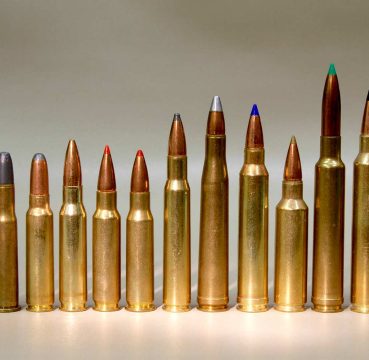


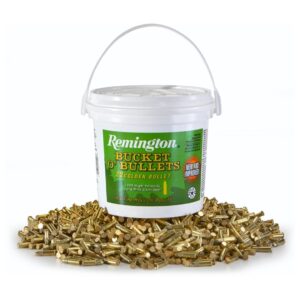
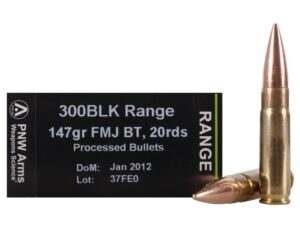
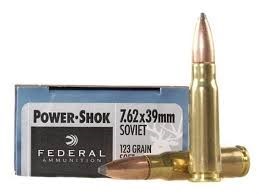
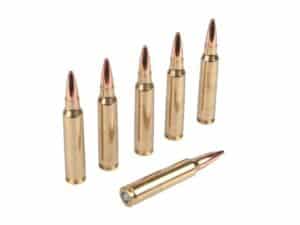
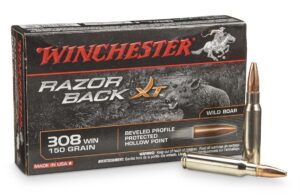
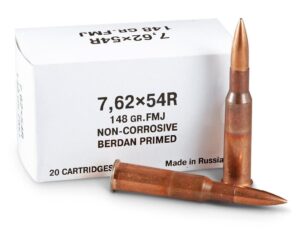
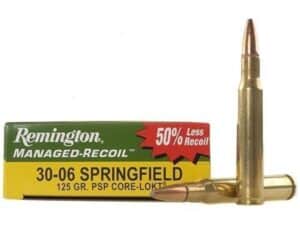
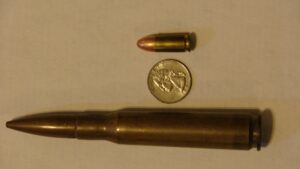










14 Responses
So .50 BMG makes it on the list, but 6.5 CM and 6.5 Grendel don’t? Also what’s up with .50 being “good for everything from sniper rifles to semi-automatic machine guns”?!
Rest of the calibers are understandable – popular ones(even if there are a slight tint of misinfo).
I have a marlin model 1893 in 25-36 caliber. Cannot find much info concerning this caliber and would appreciate any history, specs ect. you can give me.
Not sure but I have the old 7 millimeter Mauser 7×57 the French company Century Arms make the ammo for it so may make the 8x 57 not sure
“intense stopping power”? Where did you get that one? Myths are hard to quell and the lethality of the AK47 round is one of them.
Also odd that the 270 was left out.
Is it possible to obtain the old Mauser 8x57J (0.318 inch diam.) cartridge any longer. I know that Hitler replaced that with the 8x57JS (0.323 inch diam.) as a preventative measure to being assassinated. I have a pre WWII Mauser Sporter rifle with a double trigger in 8x57J with a Krupp barrel. I would like to get ammo just to shot it as it has never been drilled for scope rings either.
You say the .50 BMG “is good for everything from sniper rifles to semi-automatic machine guns.”
Please explain just what a “semi-automatic machine gun” is supposed to be.
Have you been getting your notes from Diane Feinstein?
I was really happy with this, at first after downloading and copying the caliber chart (that I cannot read) and then began reading the comments. The best laugh I have had in years was your question regarding “semi-automatic machine gun” and “notes from Diane Feinstein”! Thanks for the laughs and causing me to revaluate this entire article that I still have not read and now not spending the time to read.
What about the 300 Winchester Magnum?
I have an old Japanese model 99 made between 1939 & 1945 the flower is ground off. Where can I get shells for this or what should I use.
It’s in not the worst shape maybe I’ll sell it. Ser# 22611.
Inherited from my father in law.
I’m in northern South Carolina
Rick A Irvin
864-325-1963
Rick can you send some picks of it, might be interested in buying. thanks
I have some military rounds for 7mm & 8mm: a mosin nagant & mauser 98.how do I distinguise between the 2 /
A “common rifle caliber” that was left out? 22-250 is fairly “common” isn’t it?
I used to hunt, until I gave it up, with a 22-250. I loved it. It had enough power for an antelope or deer. I am surprised you left it out.